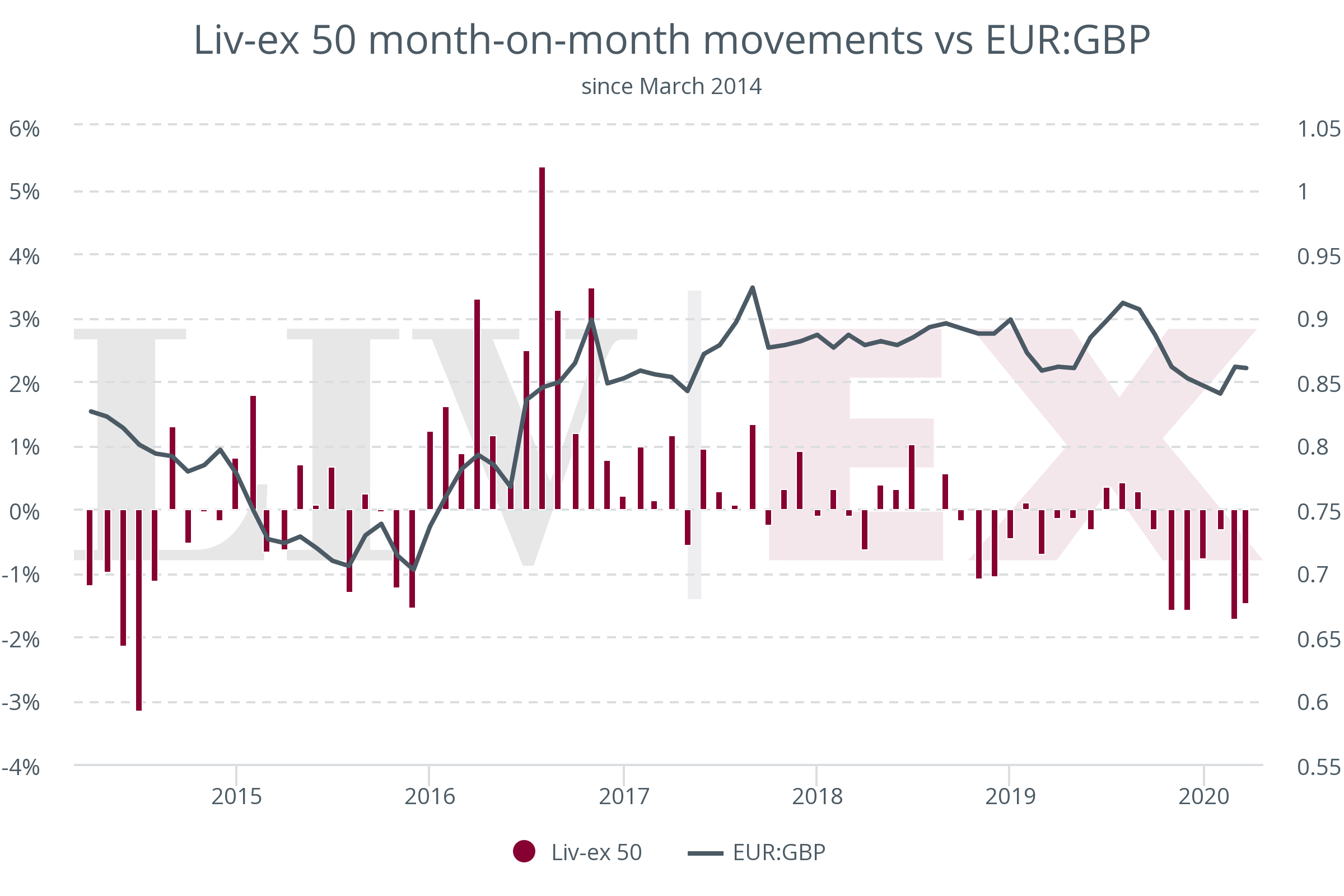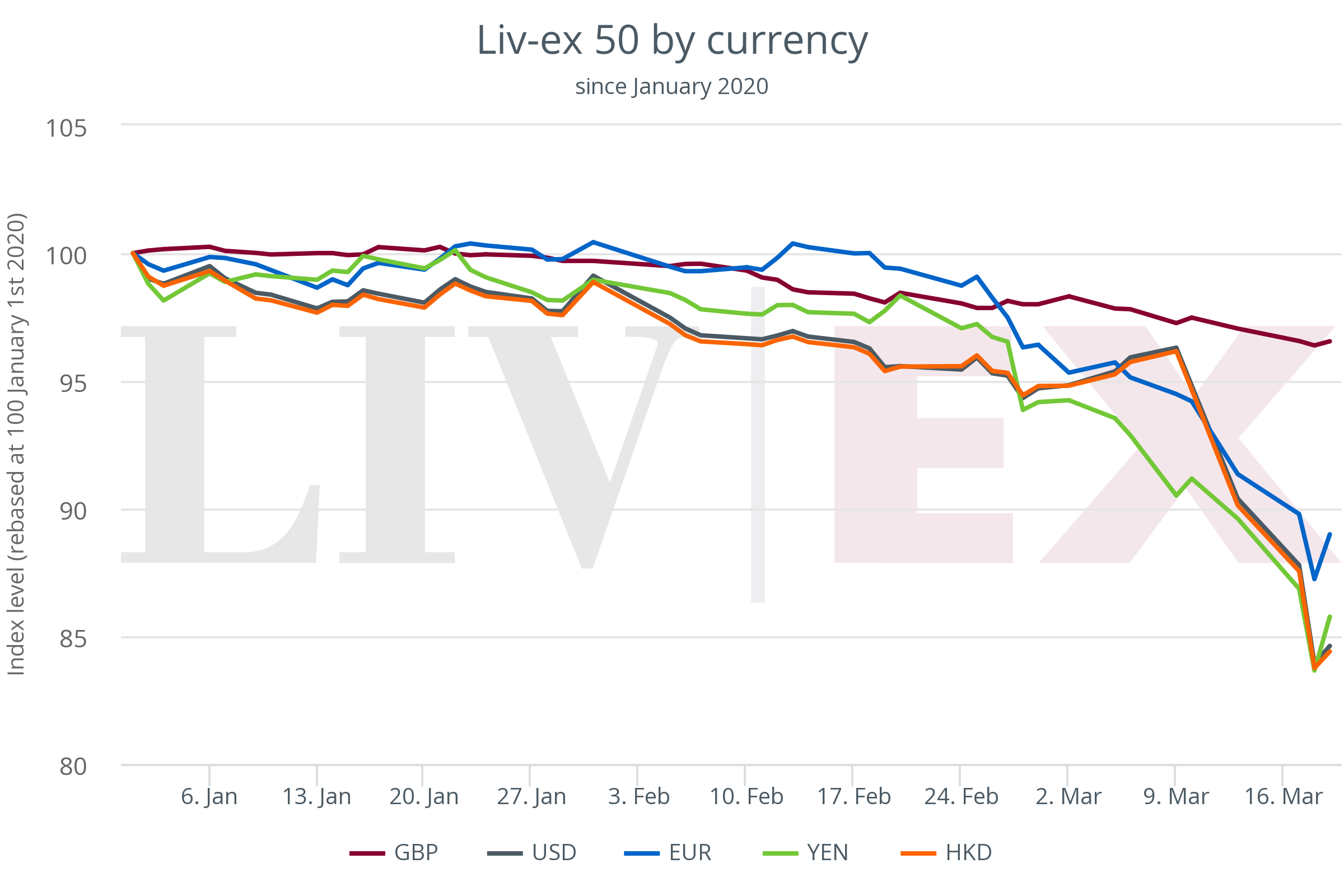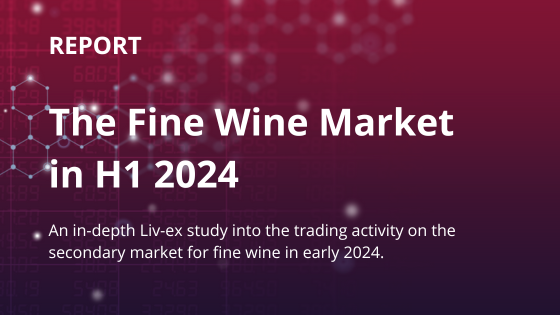As is the case in other markets, demand for fine wine (and its price) is in part driven by favourable exchange rates with merchants across the globe trading in multiple currencies. Viewed through different eyes, volatile exchange rates can have a huge impact on the value of alternative assets like wine. Sterling, in which the Liv-ex indices are denominated, saw big losses against all of the major currencies in March, with some analysts predicting GBP is headed towards Euro parity. It slumped more than 8% last week, while gauges of volatility surged.
We have previously witnessed the power of currency moves at the time of the Brexit vote, when Euro- and Dollar-based buyers took advantage of the sudden weakening of Sterling, leading to a significant rise in demand from across the world and a subsequent increase in the Liv-ex indices.
Throughout 2017, the Liv-ex 50 (see below) proved very sensitive to the EUR:GBP rate, rising and falling with the euro. In 2018, the exchange rate stabilised and price changes became relatively muted. Sterling’s weakness during the summer of 2019 as Theresa May was forced to resign saw dollar and euro buyers step into the market again, but the combination of a rapidly strengthening pound leading into the UK election and the imposition of US tariffs on European wines took the wind out of the market’s sails through the final quarter.

So far in 2020, the Liv-ex 50 has declined 3.45% in sterling. However, the price falls for the Bordeaux Grand Vins have been far greater in alternative currencies, as the US Dollar, Euro, Yen and Hong Kong Dollar have strengthened considerably against the pound since the outbreak of Covid-19. When calculated in these alternate currencies, the Liv-ex 50 has fallen 15.4% in US dollars, 11% in Euros, 14.2% in Yen and 15.6% in Hong Kong dollars.
Viewed through the eyes of Dollar, Euro and Yen buyers, First Growths (and the broader market) are looking a lot cheaper today than a month ago. Perhaps now is the time to take advantage of the currency moves and add fine wine to one’s portfolio of (alternative) investments?






